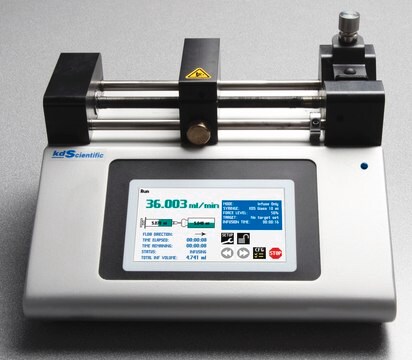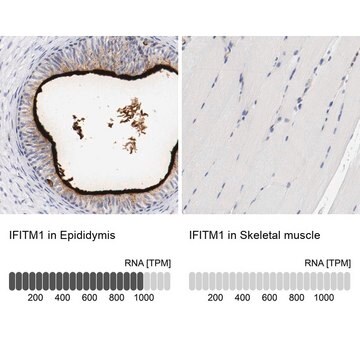MABE1125
Anti-BORIS/CTCFL Antibody, clone 4A7
clone 4A7, from human(Recombinant)
Synonyme(s) :
Transcriptional repressor CTCF, BORIS-like protein, Brother of the regulator of imprinted sites, Cancer/testis antigen 27, CTCF-like protein, CTCF paralog, HMG-1L1, Putative high mobility group protein 1-like 1, Putative high mobility group protein B1-li
About This Item
Produits recommandés
Source biologique
human (Recombinant)
Niveau de qualité
Forme d'anticorps
purified immunoglobulin
Type de produit anticorps
primary antibodies
Clone
4A7, monoclonal
Espèces réactives
mouse, human
Technique(s)
ChIP: suitable
immunocytochemistry: suitable
immunohistochemistry: suitable
western blot: suitable
Isotype
IgMκ
Numéro d'accès NCBI
Numéro d'accès UniProt
Conditions d'expédition
wet ice
Modification post-traductionnelle de la cible
unmodified
Informations sur le gène
human ... CTCFL(140690)
Catégories apparentées
Description générale
Spécificité
Immunogène
Application
Epigenetics & Nuclear Function
Chromatin Biology
Western Blotting Analysis: A representative lot detected bacterially expressed Boris N-terminal recombinant fragment, as well as endogenous Boris in mouse embryonic fibroblasts, NIH/3T3, HEK293T, and human prostate cancer cell lines, including PC3, LNCaP, and DU145 (Cheema, Z., et al. (2014). Prostate. 74(2):164-176).
Immunocytochemistry Analysis: A representative lot detected a much greater Boris immunoreactivity among human prostate cancer cell lines than the benign prostatic hyperplasia (BPH) epithelial cell line BPH-1 by both flourescent and non-fluorescent immunocytochemistry (Cheema, Z., et al. (2014). Prostate. 74(2):164-176).
Chromatin Immunoprecipitation Analysis: A representative lot detected comparable Boris occupany as CTCF at the known CTCF-targeting site (CTS) around PIM-1, while a much weaker association of Boris with another CTS, the Igf2/H19 imprinting control region (H19 ICR) was observed using chromatin preparations from human LNCaP prostate cancer cells (Courtesy of Dr. E. Klenova, University of Essex, UK).
Immunohistochemistry Analysis: A representative lot detected Boris immunoreactivity among frozen sections of prostate tumours, but not benign prostatic hyperplasia (BPH) tissues (Cheema, Z., et al. (2014). Prostate. 74(2):164-176).
Qualité
Western Blotting Analysis: 0.5 µg/mL of this antibody detected BORIS/CTCFL in 10 µg of MCF7 cell lysate.
Description de la cible
Forme physique
Stockage et stabilité
Autres remarques
Clause de non-responsabilité
Vous ne trouvez pas le bon produit ?
Essayez notre Outil de sélection de produits.
Code de la classe de stockage
12 - Non Combustible Liquids
Classe de danger pour l'eau (WGK)
WGK 1
Point d'éclair (°F)
Not applicable
Point d'éclair (°C)
Not applicable
Certificats d'analyse (COA)
Recherchez un Certificats d'analyse (COA) en saisissant le numéro de lot du produit. Les numéros de lot figurent sur l'étiquette du produit après les mots "Lot" ou "Batch".
Déjà en possession de ce produit ?
Retrouvez la documentation relative aux produits que vous avez récemment achetés dans la Bibliothèque de documents.
Notre équipe de scientifiques dispose d'une expérience dans tous les secteurs de la recherche, notamment en sciences de la vie, science des matériaux, synthèse chimique, chromatographie, analyse et dans de nombreux autres domaines..
Contacter notre Service technique








